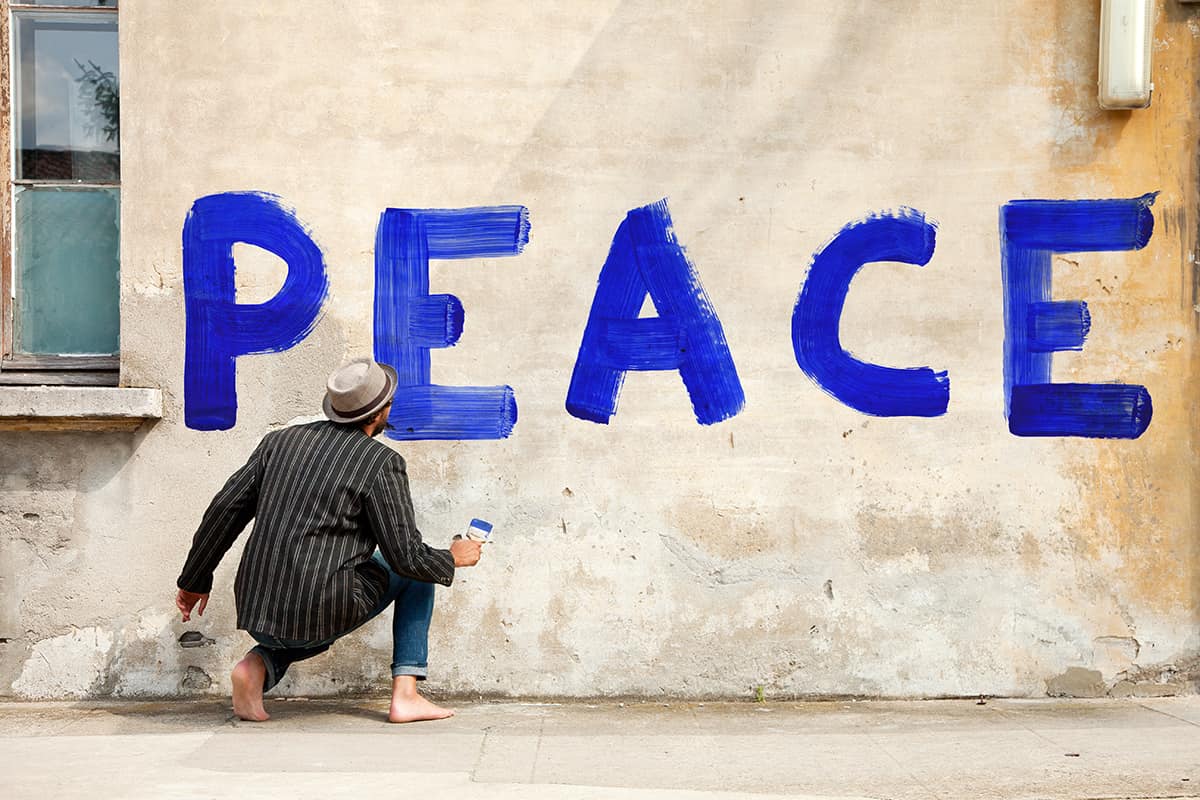In the past 15 years, global peacefulness has fallen by more than 3%, according to the 2022 Global Peace Index. Old and new conflicts, the pandemic and our political and cultural polarization are the main culprits.
Peaceful Nations Generate Economic Value
Peace, some people say, starts with a smile. Peaceful societies enjoy greater income growth, stronger currencies and higher foreign investment—not to mention political stability and a greater sense of happiness among their citizens.
The economic impact of violence on the global economy is quantifiable: $17.5 trillion in purchasing-power parity (PPP) terms, or 12.9% of total global GDP—that’s $2,200 less economic output for each person on the planet.
These are the most significant takeaways from the 2023 Global Peace Index, the world’s leading measure of global peace. Compiled by the international think-tank Institute for Economics and Peace (IEP), it covers 163 independent states and territories home to 99.7% of the world’s population. The ranking, which is based on 23 indicators grouped into three criteria (societal safety and security; extent of ongoing domestic and international conflict; and degree of militarization), shows 84 countries recording improvement and 79 showing deterioration.
Global Peace by Region
Yet overall the level of global peacefulness decreased this year by 0.42% according to IEP researchers. That might not seem like much, yet it is worth noting that it is the 13th time in the past 15 years that the average has declined, for an overall reduction of 5% since the annual Global Peace Index was first published in 2008. Since then, the number of refugees and internally displaced persons has rocketed to 85 million according to the UN Refugee Agency, with 15 nations where at least 5% of the population are either refugees or internally displaced.
It should come as no surprise that political instability and unresolved internal conflicts are major factors undermining global peacefulness. For the sixth year in a row, Afghanistan emerged as the least peaceful country in world followed by Yemen, Syria, South Sudan and the Democratic Republic of Congo. Ukraine recorded the largest deterioration in the index, falling 14 places to the 157th spot. The report estimates that the war cost Ukraine $449 billion, or 64% of its GDP. The human cost is also staggering: 65% of Ukrainian men between the age of 20 and 24 have fled the country or died in the conflict. Haiti, Mali and Israel were the other nations with the sharpest declines in this year’s peacefulness index. Another worrying trend is that conflicts are becoming more internationalized: 91 countries are now involved in external conflicts in some form—the respective figure from the 2008 index was just 33.
Regional Distribution of Peaceful Countries
Regionally, the largest improvements in peacefulness occurred in North America and the Middle East and North Africa region. North America’s improvement was mainly driven by Canada, which this year gains two positions to 11th place in the index. Stuck in 131st place, the United States has suffered a dramatic fall since 2015 across several metrics of the peace index, with civil unrest being a primary driver of the overall decline. The Middle East and North Africa region—despite having recorded the second largest improvement in ranking—remains home to four of the ten least peaceful nations in the world, and is the least peaceful region overall.
Elsewhere, Central America and the Caribbean’s average peacefulness fell slightly by 0.71% thanks to an increase in violent crime, specifically homicides. South America declined too (by 0.33%) as a result of the increase in internal conflicts, violent demonstrations and incarceration rates.
Western Europe remains the world’s most peaceful region overall, with six placing among the top ten countries, including the number one slot. Europe’s strength arises from its relatively low in internal conflict and political instability and high socio economic development, buoyed by longstanding efforts to develop peaceful societies at home.
The largest regional decline in peacefulness occurred in the Eurasia region. While the spillover consequences of Russia’s war in Ukraine have spread to the farthest corners of the world, three out of the five countries in Europe with the largest deteriorations in peacefulness—Poland, Hungary and Slovakia—share a border with Ukraine. Russia itself experienced the fifth-largest decline in the ranking.
Positive Peace From The World’s Most Peaceful Countries
Amid widespread global turmoil, perhaps the more peaceful nations show a way forward. While countries like Iceland and New Zealand may benefit from their geographic isolation—making them more culturally cohesive and less exposed to territorial disputes—several nations in the top positions of the index fought vicious wars over territory at one point in history but today are integral members of the world’s most peaceful region, Europe. Elsewhere, Singapore and Japan illustrate the impact of democratic institutions and economic growth—as well as the ability to draw important lessons from a past marked by war and poverty—on bolstering peace.
Much is required to sustain peaceful societies beyond the absence of existential threats from without. While the institutions that manage societies—at least in terms of global averages—have generally improved and become more efficient and transparent, violent protests have increased across the world over the course of the past decade. This troubling trend accelerated during the Covid-19 pandemic and continued after. Individuals have become more inflexible and politically polarized and less tolerant of dissenting views, the IEP’s experts have warned.
Top 10 Most Peaceful Countries According to the Global Peace Index:
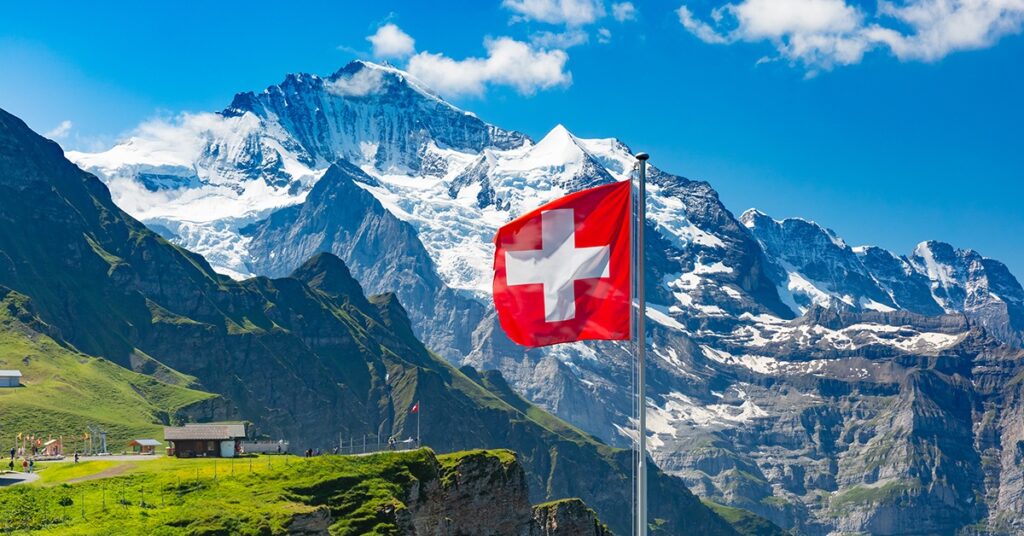
#10 | SWITZERLAND🇨🇭
Now back in the top 10, Switzerland is indeed a place with an exceptionally high degree of safety and security in society and a low level of ongoing domestic political instability or international conflict. However, its surprising degree of militarization (total active and reserve army personnel number approximately 150,000 out of a population of about 8.7 million) keeps this nation from rising into the top 5. Switzerland—along with other well-ranking peaceful nations such as Canada, Singapore, Norway and the Netherlands—is also among the world’s top weapons exporters per capita.
By most measures, Switzerland is a stable and prosperous country where linguistic and religious diversity is embraced although it has a ways to go when it comes to gender equality given women earn approximately one-fifth less than men which is worse than it was in 2000. In fourth place in the United Nation’s Happiness Report, it also ranks above the average among OECD nations when it comes to subjective well-being, income, health and education and environmental quality.
View Switzerland GDP and Economic Data
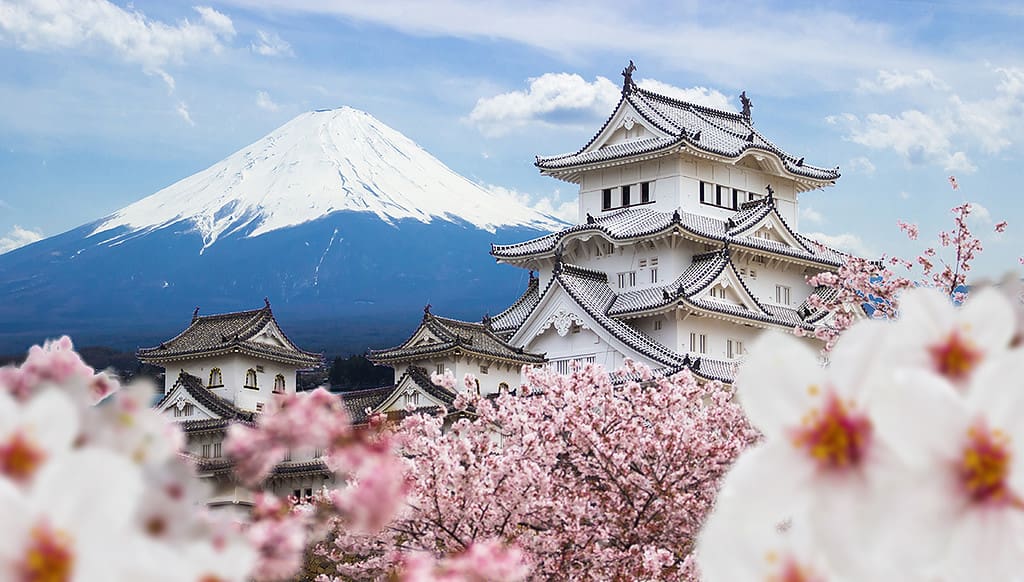
#9 | JAPAN🇯🇵
Japan is three times more densely populated than Europe and 12 times more than the U.S. Yet it still manages to rank highly for both peace and quality of life. Theft and other felonies, the National Police Agency notes, have become passé. Over the past few years, the number of recorded crimes continued to decrease to historically low levels—a trend also reflected in the low incarceration rate, which in Japan has followed a downward trajectory starting from the 1950s.
However, when it comes to relations with neighboring countries, rising tensions with China and North Korea are often mentioned by the Japanese as areas of concern. Japan’s “peace constitution”—put in place following the Second World War to prohibit the resurrection of aggressive militarism—was reinterpreted in 2014 to enable “collective self-defense,” which preceded a restructuring and build-up of the country’s military capabilities. Low marks in the per-capita military expenditure and international conflict domains keep Japan far from the very top positions of the peace ranking.
View Japan GDP and Economic Data
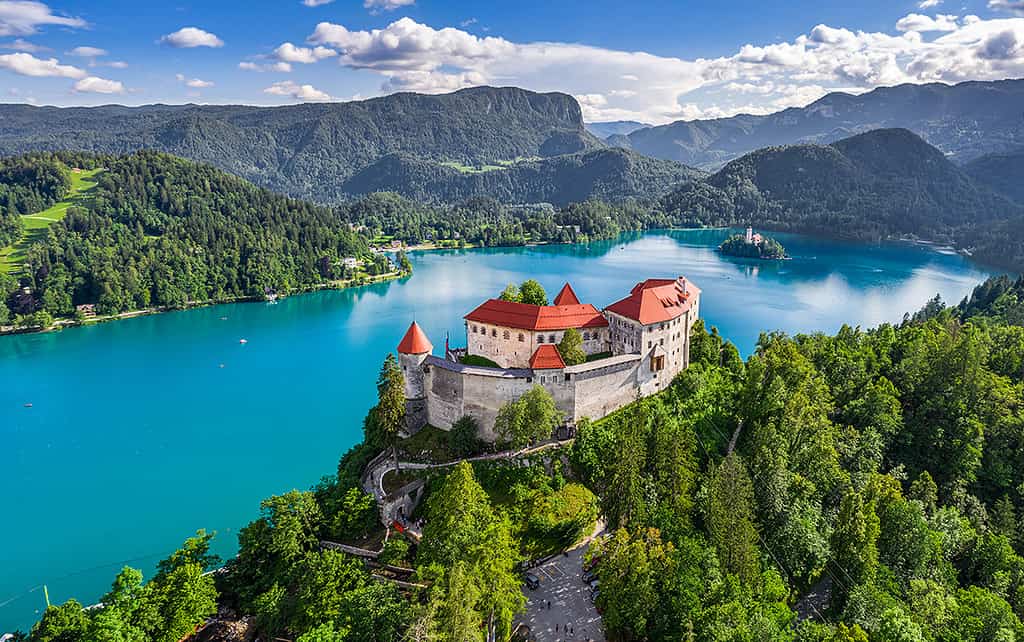
#8 | SLOVENIA🇸🇮
A legend says that when God distributed the land to all the nations, Slovenians were overlooked because there were so few of them (they are still just 2.1 million). To apologize, he gave them a little piece of paradise he saved for himself. Slovenia’s territory—half of which is covered by forests—boasts one of the greatest levels of biodiversity on the continent: with only one hour drive from the capital Ljubljana, you can either swim in the Adriatic Sea or climb the Julian Alps. It is the only country from Central Europe to place in the top 10, making it the most peaceful country in the CEE region.
It is easy to imagine Slovenia as a peaceful country partly because it is part of the world’s most peaceful region (Europe). A fixture of the Peace Report’s top 10, Slovenia is the top-performing emerging European nation. Along with the republic, Hungary and Croatia too make it into the top 20, and Poland and Bulgaria into the top 30. Of the 36 ranked countries in Europe, 13 had improvements in peacefulness and 23 had deteriorations. The only European countries that fell below the top half of the index are Türkiye (at number 147) and Ukraine (at 157).
View Slovenia GDP and Economic Data
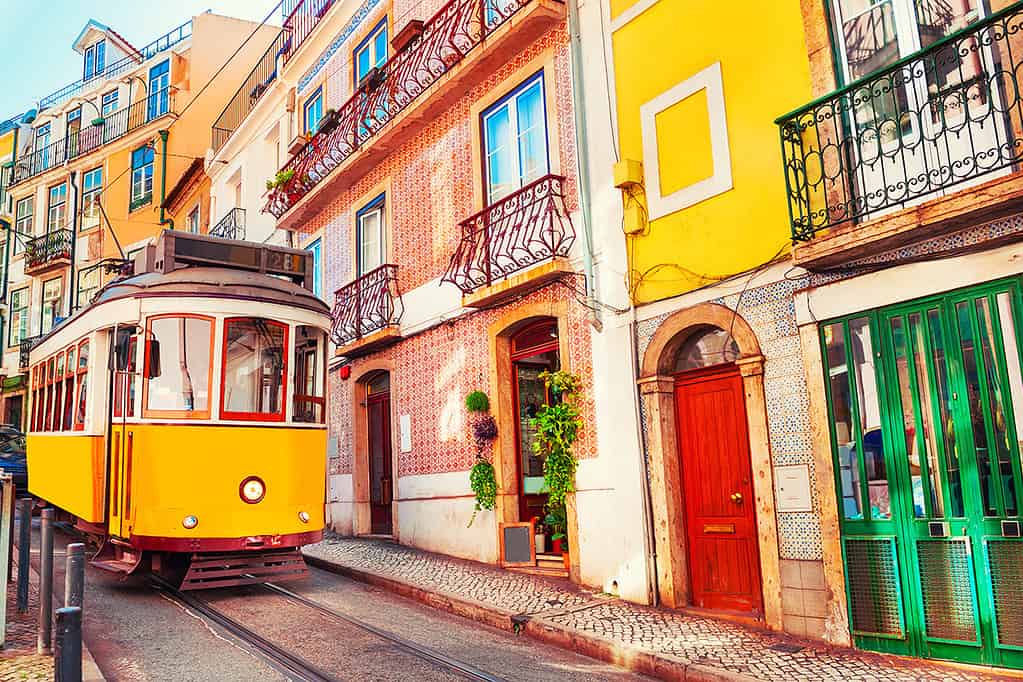
#7 | PORTUGAL🇵🇹
Portugal marches to the beat of its own drum when it comes to peace and safety. Over the past few years, this nation of about 10 million people has emerged as one of the biggest climbers of the Global Peace Index, moving from the 18th spot it held in 2014 into the top 10.
Ranking above the industrialized nations’ average in terms of housing, work-life balance, personal security and environmental quality, Portugal is also considered one of the top expat destinations due to its overall quality of life. Even better, there is no need to break the bank to enjoy the Portuguese way of living: the republic remains one of the most affordable destinations on the continent.
View Portugal GDP and Economic Data
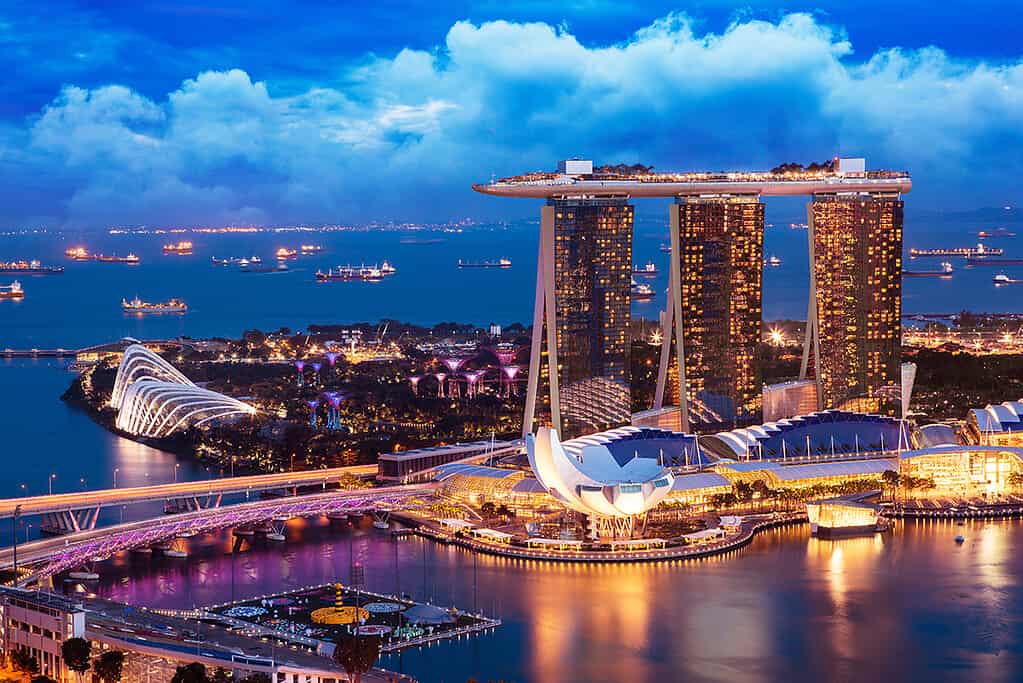
#6 | SINGAPORE🇸🇬
While the Global Peace Index report shows an increasingly violent world, Singapore has become more peaceful. Way more peaceful: when the ranking was first launched in 2008 Singapore occupied the 22nd spot. What prompted this remarkable jump? The IEP points out that the largest improvements in the ranking are usually broadly based while large deteriorations in peace are usually driven by just a few indicators. So while Singapore scored highly in societal safety and security and low levels of ongoing domestic and international conflict, holding it back from the highest tier of the ranking—like Japan or Switzerland—is its militarization level. Why does Singapore need so many people in its police and military forces and why is its arms expenditure so high? The city-state depends on seaborne trade for its prosperity, so having the naval resources to ensure the smooth passage of vessels through the Strait of Malacca, the narrow stretch of water that serves as a gateway between the Indian and Pacific Oceans, is crucial.
View Singapore GDP and Economic Data
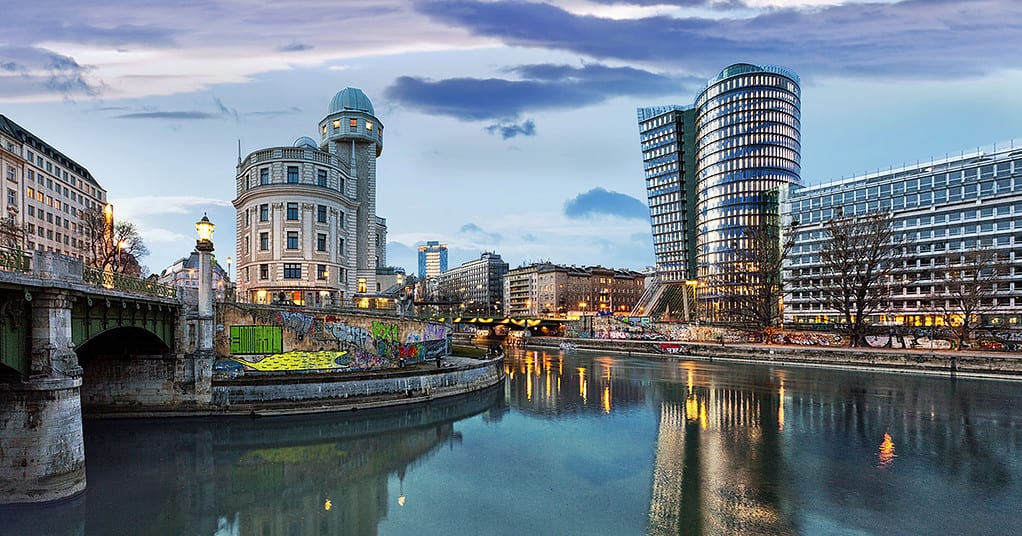
#5 | AUSTRIA🇦🇹
Since the end of the Cold War, this small landlocked country of about 9 million moved from its peripheral position at the borderline between East and West closer to the center of a united Europe. As a young member of the EU and outside of NATO, Austria prided itself on trying to get along with rival political blocs and embracing new forms of cooperation with its neighbors.
However, while Austria performs well in many measures of wellbeing such as income, jobs and housing, social tensions have been growing in recent years fueled especially by anti-migrant campaigns of the popular right-wing Freedom Party (FPÖ). When in November 2020 an ISIS sympathizer shot and killed 4 people and injured 23 others in the city center of Vienna, the government responded by unveiling broad anti-terror measures that included the ability to keep convicted individuals behind bars for life and facilitate electronic surveillance for those who are released. As a consequence, Austria experienced one of the largest deteriorations in peacefulness in Europe owing to a worsening of the terrorism impact indicator. Not only that, during Covid, its capital has been the theatre of major protests against lockdowns and the government’s decision to make the vaccination against the virus mandatory for all its citizens. Now, one year ahead of general elections, the Freedom Party is leading the polls and is positioned to win with approximately on third of the vote.
View Austria GDP and Economic Data
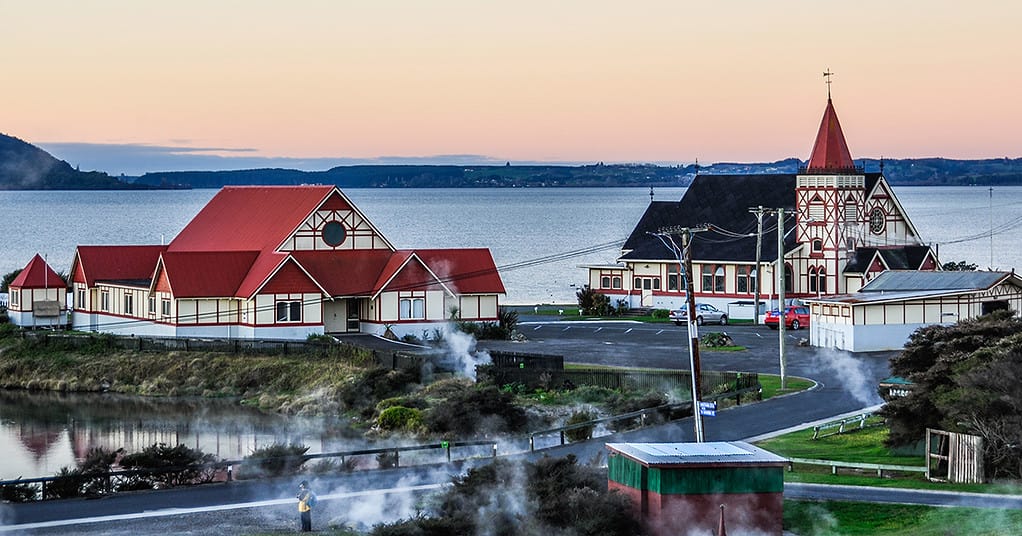
#4 | NEW ZEALAND🇳🇿
After holding on to the number two spot in the index since 2017, New Zealand slipped two spots in this edition of the Global Peace Index. Scoring almost perfect marks in the domains of societal safety and domestic and international conflict, this peaceful country is widely considered a wonderful place to live. Still, due to an increase in weapons imports and exports and upgrades on armed personnel carriers, in the militarization domain New Zealand’s score fell by 6%.
At around the same size as the United Kingdom but with a population of roughly 5 million people, New Zealand ranks at the top in health status and above the average among OECD members when it comes to education, jobs and earnings. All this, however, comes at a cost: the shortage of affordable housing is increasingly making it difficult for people with low incomes to buy homes, with the gap between rich and poor considered the top economic issue facing New Zealand by 20% of its citizens.
View New Zealand GDP and Economic Data
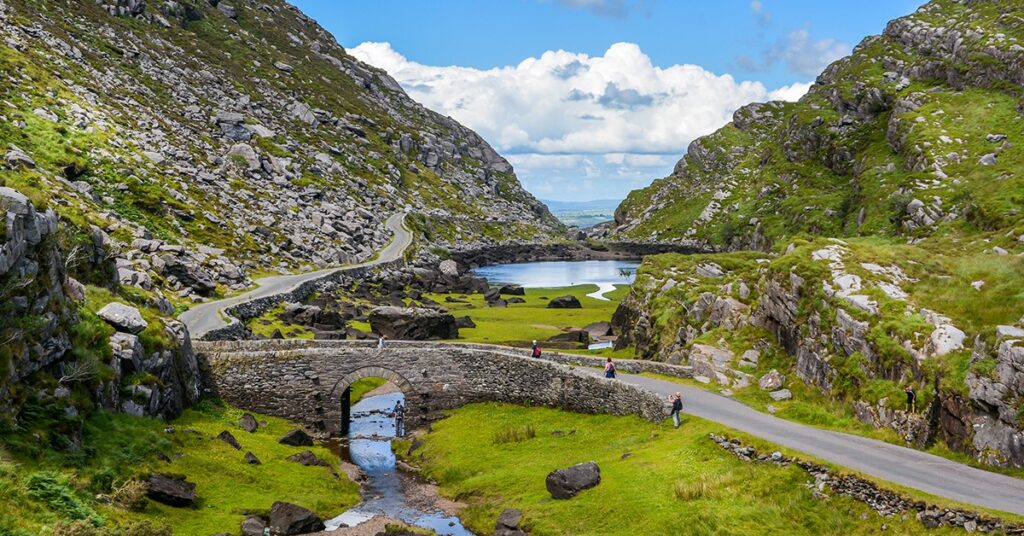
#3 | IRELAND🇮🇪
Ireland is one of the wealthiest, most developed and happiest nations in the world. It is also quite peaceful: two years ago it managed to gain four positions and land in the eighth spot of the Global Peace Report, the highest position it ever attained in the ranking. Then Ireland outdid itself last year by leapfrogging many of its European peers and conquering the third place in the Peace Index—and that’s where we find it this year too.
Make no mistake: Ireland did not become a peace-loving nation overnight—centuries of tense relations with the United Kingdom can attest to that. Today though, due also to its longstanding independent status and neutral army (meaning that it is not a member of NATO), the Irish republic is routinely ranked as one of the safest countries in the world. That does not mean it has become immune from political and social turmoil—during the pandemic, for example, Ireland saw its share of violent anti-lockdown demonstrations.
On page 92 of its study, the IEP reveals a striking piece of data: when it comes to the economic cost of violence, Ireland performs better than almost all countries in the world. Ranking 160th out of 163 nations, the toll is only 3% of the GDP compared to the global average, 12.9%. Only Bangladesh, Indonesia and Madagascar perform slightly better in this domain.
View Ireland GDP and Economic Data
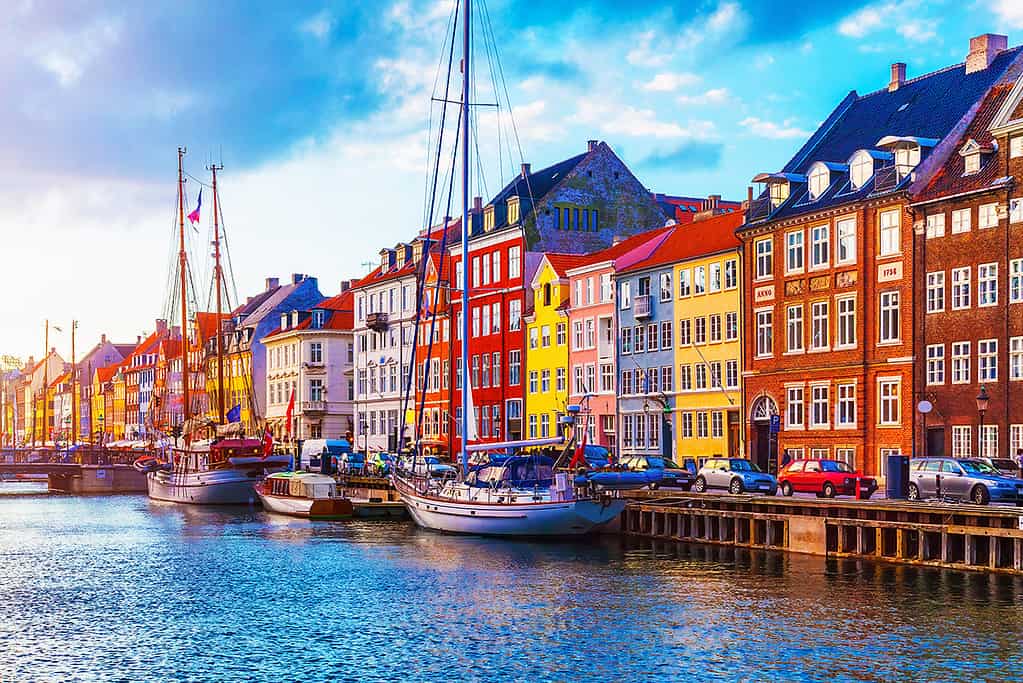
#2 | DENMARK🇩🇰
Sometimes gaining one or two spots and sometimes losing them, since 2008 Denmark never dropped below the fifth place in the Global Peace Index—such relatively minor changes in the ranking only tell us that the kingdom is doing well. A safe country to travel and live in, Denmark is characterized by a high degree of political stability, freedom of the press and respect for human rights. It also boasts a high level of income equality and is frequently ranked as one of the happiest nations in the world.
To safeguard all that happiness and those excellent standards of living, this nation of less than 6 million spends a lot. In 2018, to counter the threat of Russia’s increasing military activity in eastern and northern Europe, Denmark reached a landmark cross-party political deal to increase its defense budget by 20%, on course to match its Nordic neighbors Sweden’s and Norway’s expenditure levels and reach the NATO membership target of 2% of national GDP in military spending. As a result, Denmark’s overall standing in the Peace Index is weighed down by its performance in the militarization domain, where it places just 16th in the world. Things are likely to stay that way: Denmark has recently announced that it plans to invest the equivalent of $21 billion in defense over the next 10 years, and to allocate roughly $3 extra billion in military aid to Ukraine until 2028.
View Denmark GDP and Economic Data
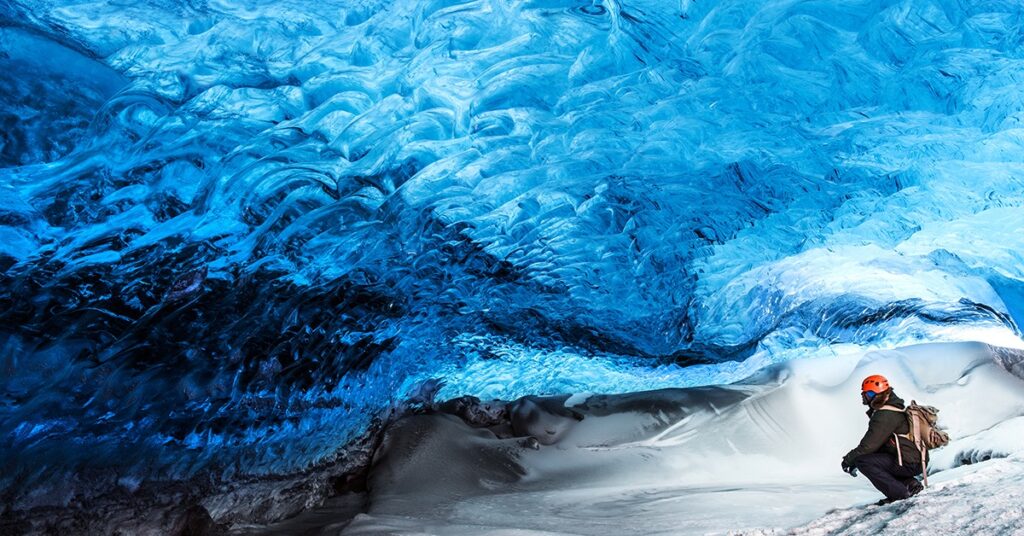
#1 | ICELAND: The Most Peaceful Country in The World
Icelanders can sleep well at night: they live in the most peaceful nation in the world. No news is good news when it comes to tranquil Iceland: it is the 16th year in a row that it retains the number one spot—since the index began in 2008. With no standing army, navy or air force and the smallest population of any NATO member state (about 365,000 people), Iceland also enjoys record-low crime rates, an enviable education and welfare system, and ranks among the best nations in terms of jobs and earnings and subjective sense of wellbeing.
But did we say that Icelanders’ idyllic peace faces no threats? Last September, the Reykjavík police arrested four people in connection with preparations for a suspected terrorist attack. That was the first year that the country recorded any terrorist activity. As a result, along with an increase in the country’s homicide rate, Iceland experienced a 4% deterioration in its overall score.
View Iceland GDP and Economic Data
WORLD’S MOST PEACEFUL NATIONS: FULL RANKING
Source: Global Peace Index 2023.
